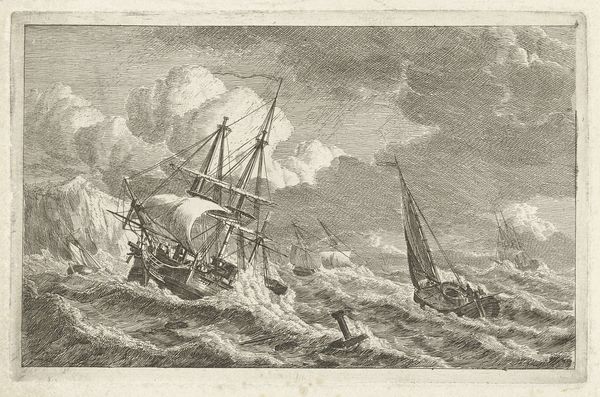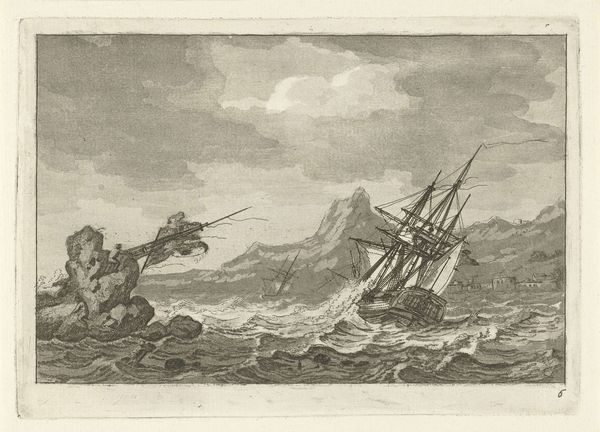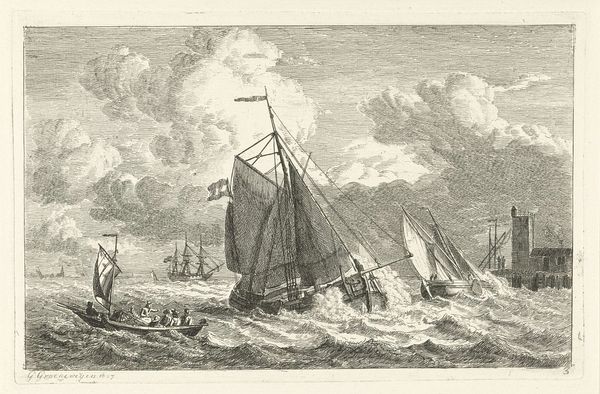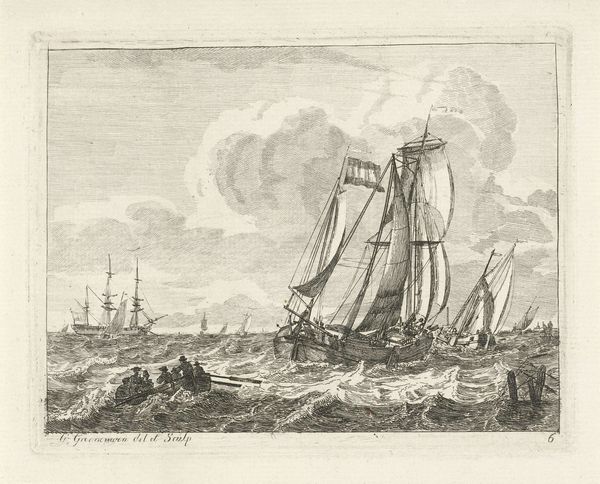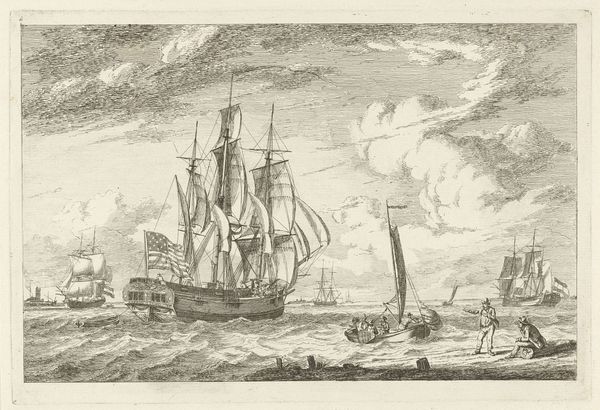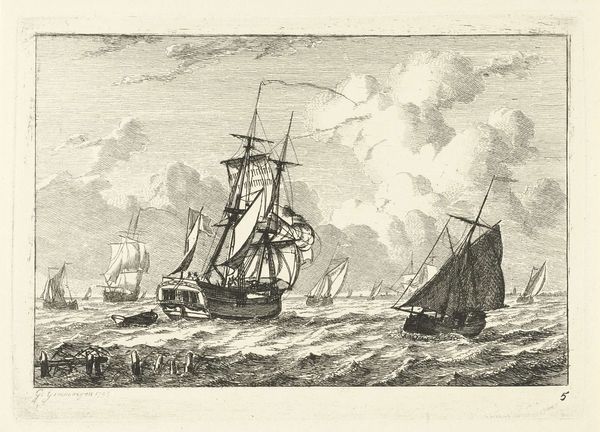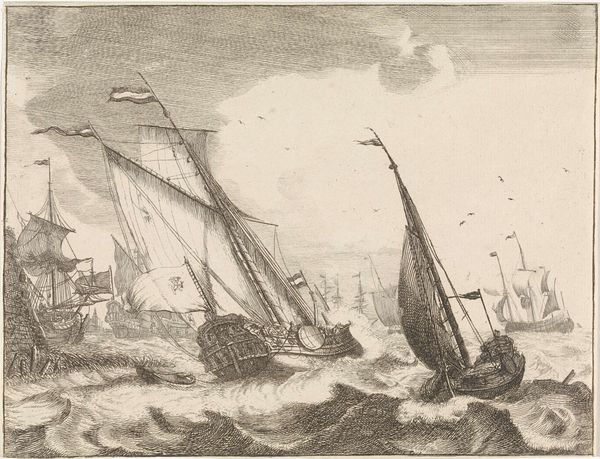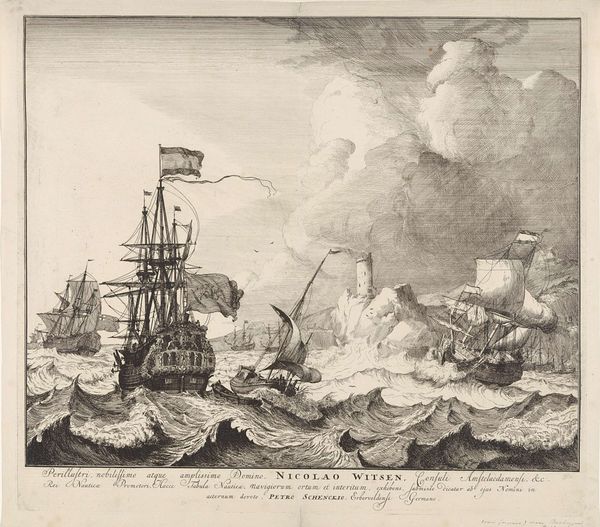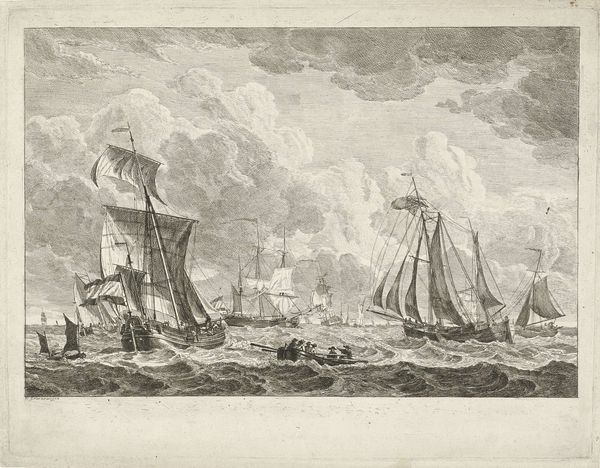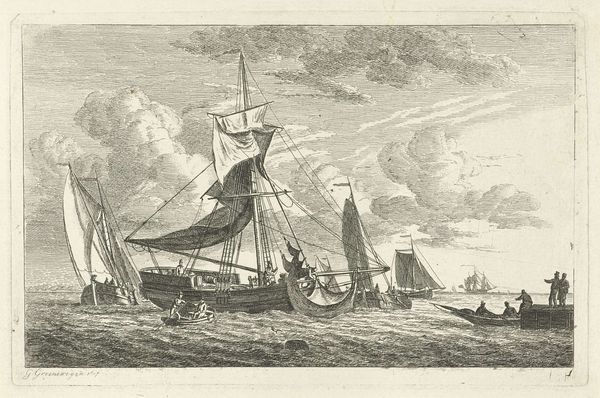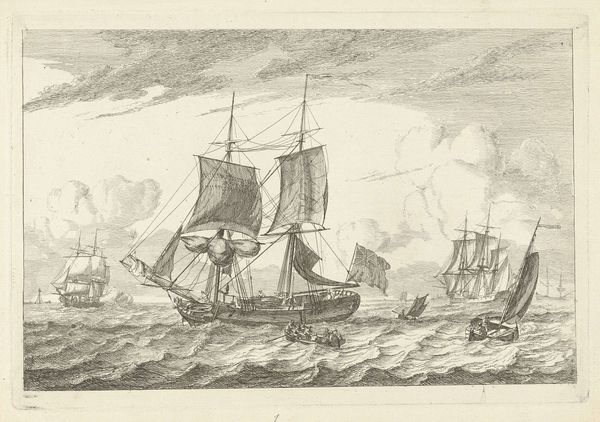
print, engraving
#
baroque
# print
#
landscape
#
engraving
Dimensions: height 176 mm, width 261 mm
Copyright: Rijks Museum: Open Domain
Curator: Welcome. Here we see an engraving from between 1675 and 1711, currently held in the Rijksmuseum, titled *Woelige zee met rechts een oorlogsschip onder zeil*, depicting a turbulent sea with a warship sailing on the right. The piece is attributed to Anonymous. What are your initial impressions? Editor: The mood is undeniable – pure drama! The composition is excellent in that sense, contrasting the struggling ships with the powerful, almost overwhelming sea. The line work really emphasizes that struggle. Curator: Precisely. Notice how the engraver used densely packed, almost chaotic lines to represent the waves, particularly around the ships, lending the scene its vitality. This visual texture generates a sense of both danger and the sea's raw power, effectively placing the viewer at the heart of the storm's chaotic ballet. Editor: Looking closer at the material reality, an engraving process itself – the manual labor, the etching into a metal plate, then inking and printing – adds to my perception. It's almost ironic how this delicate method can create such a rough, churning scene. The scale and nature of labor for making an edition for dissemination are embedded within it. Curator: And yet that contrast is pivotal to its effectiveness. By leveraging such deliberate and ordered patterns, the work effectively symbolizes humanity's engagement with nature, as each engraved line testifies to the artist's strategic intention to highlight and mediate these tensions. We also see a classical, Baroque approach in this drama, but created through the humble, reproductive medium of print. Editor: The choice of print for disseminating this intense image speaks volumes. How many people likely consumed this artwork and what did that mean for popular imagination? The distribution through print suggests broader social engagement with the narratives of the sea. Curator: Yes, consider its accessibility relative to an oil painting. The reproducible nature democratizes the visual language around naval power and the unpredictable ocean, facilitating its integration into more people's lives. Editor: It provides insights into maritime culture and popular notions. What did naval conflict and weather signify for the populace back then? This offers some understanding on what consumed the broader populations. Curator: It indeed reveals complex facets of how society perceived and processed their world during this period. That final balance is perhaps where the engraving succeeds—not just representing the power of nature, but capturing how human industry and craft contended with that immense force. Editor: So we begin to glimpse the interplay of nature, commerce, and human resilience etched into this small, impactful artwork.
Comments
No comments
Be the first to comment and join the conversation on the ultimate creative platform.
